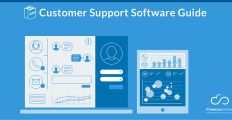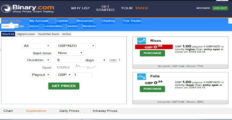How to improve CX using a helpdesk? Although only comprising part of the customer experience management spectrum, helpdesk is central to the former’s successful implementation. There are three main aspects where helpdesk software adds value to CX, namely:
- Operational cost reduction
- Resolution time
- Agent performance.
In this article we’ll explore the following positive outcomes that a helpdesk app can deliver:
- Improve cost per contact and customer satisfaction
- Work on first contact resolution and agent utilization
- Boost first level resolution rate
- Be keen to keep agents happy
- Embrace aggregate helpdesk performance
What is customer experience?
The definition of customer experience (CX) is that thing comprising interactions between a customer and an organization throughout the lifetime of their business relationship requires deft, awareness, willingness to discover, cultivate, create advocacy, purchases and service.
If you have been wondering about what is the concept of customer experience, this is easily the quickest way you get to the heart of it.
How you mind—and deliver—customer experience nowadays could very well make or break your business, because who wants a customer who only buys from you once and then forgets about you?
Customer experience versus customer service: any difference?
If you are in the habit of taking customer experience and customer service as one and the same, you are doing yourself a disservice: these two things are different. So what is the difference between customer experience and customer service? Here’s a good diagram that sums up the junction where the two meet:

Source: petruzzo.com.
If a customer suddenly pops up at your store or you get a first-time call order, you definitely have found a good opportunity to impress and deliver excellent customer service. But the next time the same customer visits or calls and somebody else attends to them and flunks it all, you suddenly see the concept of customer experience in action: the situation shows you handily that customer service is only one aspect of the entire customer experience domain.
Today’s online-heavy marketplace gives customer experience a new face—it’s suddenly gone beyond person-to-person service and, with the kind of technology around, companies can connect with their customers in new and exciting ways—or disconnect with the same customers in new and appalling ways. It really works either way.
What is omnichannel customer experience?
The term “omnichannel customer experience” has probably pricked your attention quite a few times. But what is omnichannel customer experience exactly?
An omnichannel customer experience is made up of individual customer touchpoints over a variety of channels that seamlessly connect, allowing customers to pick up where they left off on one channel and continue the experience on another.
Today’s customer experience platforms can support multiple channels of customer engagement: web, voice, digital, and email. However, that’s only a part of customer experience. Supporting multiple channels within a single interaction is the complete omnichannel customer experience—and one that is expected by today’s customers. A good example of this is Freshdesk, one of the most popular help desk software providers which offers flexible and scalable deployment models through the cloud. You can easily sign up for a Freshdesk free trial here.
What do you think makes a good customer service experience? Among the massive body of literature—both academic and business-oriented sources—a few findings stand out:
- Companies who successfully implement a customer experience strategy achieve higher customer satisfaction rates, reduced customer churn and increased revenues
- Around 60% of customers are willing to pay more for a better experience
- As much as 74% of senior executives believe that customer experience directly impacts the willingness of a customer to be a loyal advocate
- Happy customers remain loyal
- You have to invest in improving customer experience if you want customers to stay loyal.
- The happier customers with a brand, the longer they stay with them
- While as much as 80% of companies believe they are delivering superior experience, only 8% of customer believe they are receiving great customer experience—so what’s going on?
And in pursuit of delivering better customer experience, pundits, gurus and longtime practitioners have typically turned to new technologies and paired them with elaborately formulated CX metrics. The technologies involve multiple channels as mentioned above.
The help desk remains an important part of the company-customer interaction equation, itself getting technology upgrades as the others and its own share of metrics to make it achieve its own share of company-wide customer-experience targets. But as the new help desk technologies have expanded CX strategy options and enabled more ways to measure performance and targets than ever before, is it safe to say the pursuit of more metrics leads to more success down the road?
7 Most Important Help Desk Metrics
In pursuit of customer experience excellence, the average customer service help desk tracks more than 25 metrics—a classic example of quantity over quality, where help desks fall into the standard assumption that they are doing something productive and good by tracking all of these metrics.
Cost
- Cost per inbound contact
- Cost per minute of handle time
- First level resolution rate
Quality
- Customer satisfaction
- First contact resolution rate
- Call quality
Productivity
- Inbound contacts per agent per month
- Agent utilization
- Agents as % of total help desk headcount
Agent
- New agent training hours
- Annual agent training hours
- Annual agent turnover
- Daily agent absenteeism
- Schedule adherence
- Agent occupancy
- Agent tenure
- Agent job satisfaction
Service Level
- Average speed of answer (ASA)
- Call abandonment rate
- Percent answered in 30 seconds
Call Handling
- Inbound contact handle time
- Outbound contact handle time
- Inbound contacts as percentage of all contacts
But here’s the thing: the vast majority of these metrics are really only marginally relevant—at best. For your business, you will do wise to focus only on the seven help desk metrics that really matter:
- Cost Per Contact
- Customer Satisfaction
- Agent Utilization
- First Contact Resolution Rate
- First Level Resolution Rate
- Agent Satisfaction
- Aggregate help desk Performance
These shortlisted items are not selected out of thin air: it’s the result of empirical evidence from more than a thousand help desk benchmarks. They in fact represent the 80/20 rule when it comes to help desk performance: 80% of the value you receive from performance measurement and management in your help desk can be derived from these seven simple metrics.
So how to improve customer experience using a help desk? We looked and dug around how to improve CX using a help desk and noted the key answers for you.
How to Improve Customer Experience By Using Help Desk Software
1. Improve Cost Per Contact and Customer Satisfaction
If you’re in business, you naturally want to achieve the highest possible quality at the lowest possible cost—and there is no better way to do that than having cost and quality measured on an ongoing basis. This is so much so that you have advocates who argue that cost and quality are the only two things you need to focus on.
In a help desk, the most effective cost metric is cost per contact, and the best indicator of quality is customer satisfaction.
We go to Freshdesk again to illustrate how it accomplishes lowering the cost of providing customer service while increasing the quality of the same time through such measures as keeping relevant customer records in an easily accessible place, keeping important facts, history, and conversation efficiently, lessening agent collision by early detection of conflict, and automating the whole scenario, as illustrated below.

By allowing for scenario automation, Freshdesk easily saves cost to make way for increased chance of customer satisfaction.
With this premise in mind, it’s relatively easy to come up with the next two metrics on our list:
2. Work on First Contact Resolution (FCR) and Agent Utilization
While it pays to employ metrics as a diagnostic tool to improve performance and treat customer satisfaction as one of foundation metrics, but how do we go about improving customer satisfaction? if customer satisfaction is lumbering, how then do we treat it?
In help desk scenarios, customer satisfaction is affected by a range of other performance variables, from Average Speed of Answer (ASA), Call Quality, to Handle Time. But data from the benchmarks analysis points to the single biggest driver of customer satisfaction—FCR: nine times out of ten when customer satisfaction needs to improve, this can be achieved by increasing the FCR.

Aside from providing ways to boost FCR, Freshdesk also lets you view how you are performing to meet ideal FCR metrics.
Here’s another thing: this is exactly why world-class help desks spend an enormous amount of time on this metric, summoning a number of tactics to continuously improve FCR—including via agent training, investments in knowledge bases, and agent incentives tied to improvements in FCR.
But what about cost per call, the other foundation metric in the help desk? It is common knowledge that labor—your employees—is the single biggest expense in the help desk. In fact, for the average help desk, 67% of all costs are labor-related: salaries, benefits, incentive pay, and contractors. By definition, then, labor costs are the greatest lever we have to reduce the cost per call.
Just as world-class help desks are obsessive about maintaining a high FCR, they are equally committed to keeping their agent utilization rates high. This, in turn, has the effect of minimizing cost per call.
But mind this one: high utilization rates taken to the extreme can actually increase your costs by driving agent turnover rates higher. Whenever utilization numbers approach 70% – 80%, that help desk will see relatively high agent turnover rates because they are pushing the agents too hard. Extremely high utilization leads to burnout—and that, in turn, leads to turnover.
Turnover is one of the most costly things that a help desk can experience. In order to proactively manage agent turnover, best-in-class help desks focus on “career pathing,” training, and frequent coaching sessions. The more time spent off the phones, the more training agents receive, and the more career coaching they receive, the lower the turnover will be. Of course this has to be approached with keeping agents productive on the phones.
3. Boost First Level Resolution Rate
First Level Resolution Rate is really proxy for Total Cost of Ownership (TCO)—a critical measure of overall help desk efficiency. If you’re not watching this metric, there’s a chance you are looking at a low Cost per Contact—and thus appear to be very efficient—when you are actually driving a very high TCO. Specifically, if the help desk is achieving a low Cost per Contact by transferring and escalating contacts to other support levels – Level 2, Level 3, Desktop Support, Vendor Support, etc.—then it is also dramatically increasing the TCO.
4. Be keen to keep agents happy
The next metric, Agent Satisfaction, is strongly correlated with many other metrics on the help desk. High levels of Agent Satisfaction lead to lower turnover, lower absenteeism, lower handle times, and higher First Contact Resolution Rates. These, in turn, result in lower Cost per Contact, and higher Customer Satisfaction. Progressive help desks therefore measure Agent Satisfaction at least twice per year, and take steps to ensure that they are maintaining high levels of Agent Satisfaction. Specifically, world-class help desks provide training, career pathing, and coaching for their agents at well above industry average levels. This, in turn, leads to high levels of agent satisfaction and morale.
5. Embrace Aggregate Help Desk Performance
Proceeding now to properly implementing the seventh metric: what is aggregate Help Desk performance, and how do we measure it? Can a single measure really tell us the overall performance of our help desk? The answer is yes, but as the name suggests, it involves aggregating a number of measures to come up with a combined score for help desk performance.
The in-depth research on these metrics reveal that establishing a single, overall score for your help desk is crucial. For all intent we would do best to call this as Balanced Score—since it truly communicates a balanced picture of help desk performance. It simply utilizes the key measures tracked in a help desk, including such things as cost per call, ASA and call abandonment rate, and rolls them into a single, aggregate measure of help desk performance.
When tracked over time, this metric enables us to see whether the overall performance of our help desks is improving or declining. As it happens, when a help desk attempts to communicate its performance to other stakeholders in the business, particularly to lay people who do not understand help desk operations, they are often overwhelmed by the minutia of such measures as speed-of-answer and abandonment rate, becoming confused as to how to interpret the results. What they then do is focus on one easily-understood measure like abandonment rate or speed of answer, and draw conclusions about overall help desk performance from these two relatively unimportant measures—a classic case of “missing the forest for the trees.”
It is therefore absolutely critical to communicate the overall performance of the help desk—and the Balanced Score does that for you. With it, you are able to capture the aggregation of a whole series of measures, the normalization of those measures, and the creation a single all-encompassing indicator of help desk performance on a monthly basis.
In this way, the help desk can track its overall performance, and, in any given month, may see costs go up or customer satisfaction go down or speed of answer increase, but these individual measures take on a secondary level of importance because the Balanced Score provides a more complete and accurate portrait of help desk performance.

You can factor in all the essential metrics based on your usage of Freshdesk and derive your helpdesk aggregate score.
Three Grand Takeaways
- Customer service is about people skills. Not a few times we highlighted the need to send held desk personnel to training to enhance their skills. Why? Because the old wisdom that great interpersonal skills takes precedence over anything else when it comes to customer engagement still holds. It just makes sense: you do not want someone from your staff interacting with your customers while they carry a lot of the bad days they’d had somewhere else and take them out on your customer.
- But you need the help of technology. Today’s hyperconnected customers expect support at once, if not in real time, and a more personalized approach. Add to that an ever increasing customer base (a good problem), how does your team cope with an influx of tickets? The answer is a scalable, easily deployed omnichannel help desk like Freshdesk with automation, collaboration and analytics tools. Why not sign up for a free Freshdesk free trial here to get an idea how advanced help desk features today handle volumes of customer queries with ease daily?
- There is no magic approach to delivering great customer experience—but seeing and working through the hype is the best way to start getting there.



























Leave a comment!